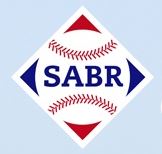Those BBRT readers who play softball – particularly if you play in a senior (over-60) league like I do – are pretty familiar with the concept of a “courtesy” runner, fielder or even hitter. You may not be aware, however, that it wasn’t so long ago (well, at least it was in my lifetime) that courtesy players were allowed in the major leagues. The last “legal” courtesy player (more on that distinction later) was deployed in 1949. Following that season, MLB instituted rule 3.04:
“A player whose name is on his team’s batting order may not become a substitute runner for another member of his team.
Rule 3.04 Comment: This rule is intended to eliminate the practice of using so-called courtesy runners. No player in the game shall be permitted to act as a courtesy runner for a teammate. No player who has been in the game and has been taken out for a substitute shall return as a courtesy runner. Any player not in the lineup, if used as a runner, shall be considered as a substitute player.”
In this post, BBRT would like to take a look at a few instances involving courtesy players – as well as circumstances surrounding those situations how they reflect changes in the way the national pastime is played.
The last legal use of a courtesy player came on July 2, 1949. With one out, in the bottom of the ninth inning, the Saint Louis Browns (there’s a change right there) were leading the Cleveland Indians 4-0, when Indians’ SS Ray Boone was hit by a pitch and unable to continue. Indians’ manager Lou Boudreau (who also started the game at 3B for the Tribe – a player-manager, there’s another change) brought in Jim Hegan (who had started the game – and was still in – at catcher) as a courtesy runner for Boone. Boudreau needed the permission of Browns’ manager Zach Taylor to make the switch, which is why the slow-footed Hegan was used. Note: Given the need for approval from the opposing manager, courtesy players – particularly runners – were often chosen from among the less fleet-footed players available. Hegan scored on a sacrifice fly as the Indians closed the gap to 4-2. Since the courtesy substitution came in the bottom of the ninth, neither Hegan nor Boone returned to their position. Note: Most instances (more than half) of courtesy players, particularly runners, have followed a hit by pitch – although base running injuries (spikings, sprains, collisions) and to a lesser extent equipment changes (damaged shoes) have also contributed.
The previous use of a courtesy player (July 2, 1949) also involved Boudreau’s Indians and, while it is less significant (not being the last legal use), it does serve to illustrate more about how the game has changed. Instead of the ninth inning, this switch came in the first. This time, the Indians were playing the Red Sox in Boston. Sox starter Joe Dobson got into trouble quickly: single by SS Ray Boone; walk to LF Allie Clark; double by 3B Ken Keltner (bringing home Boone); intentional walk to CF Larry Doby (loading the bases); Grand Slam by 2B Joe Gordon. The next batter (here’s another of those changes), as was the often and accepted practice following a home run, was hit by a pitch. That hitter was player-manager Lou Boudreau (starting at 1B that day). Keltner, who had batted earlier in the inning, came in as a courtesy runner for Boudreau and scored (here’s another change, at least for AL fans) on a hit by Indians’ starting pitcher Bob Feller. When the Indians took the field in the bottom of the inning Keltner was at third base and Boudreau back at first.
These two examples represent the final two “legal” uses of courtesy players. On August 10, 1952, Pittsburgh fans witnessed the illegal use of a courtesy fielder. It came in game two of a double header against the visiting Cubs. In the top of the ninth of a 4-3 game (Cubs leading), Pirates’ catcher Clyde McCullough was injured. The Pirates, however, had used their two remaining catchers as pinch hitters – Ed Fitz Gerald in the sixth inning and Joe Garagiola in the eighth. Cubs’ manager Phil Caverretta (a player-manager, by the way) agreed to let Pirates’ skipper Billy Meyer bring Fitz Gerald in to catch. The umpires mistakenly allowed the switch, which was was no longer legal under rule 3.04.
 Courtesy fielders are much less common than courtesy runners in MLB history. The last documented legal courtesy fielder came into play on July 24, 1934. It happened in the bottom of first inning in a game between the Bronx Bombers and the Saint Louis Browns. Yankees’ 2B Tony Lazzeri got something in his eye and had to leave the field to have it attended to. Don Heffner came off the bench to replace Lazzeri and finish the inning at second base. Lazzeri’s spot in the batting order came up in the top of the second and he took his turn at the plate and then returned to second base in the bottom of the inning.
Courtesy fielders are much less common than courtesy runners in MLB history. The last documented legal courtesy fielder came into play on July 24, 1934. It happened in the bottom of first inning in a game between the Bronx Bombers and the Saint Louis Browns. Yankees’ 2B Tony Lazzeri got something in his eye and had to leave the field to have it attended to. Don Heffner came off the bench to replace Lazzeri and finish the inning at second base. Lazzeri’s spot in the batting order came up in the top of the second and he took his turn at the plate and then returned to second base in the bottom of the inning.
Even rarer are courtesy batters. The only documented occasion being on July 12, 1915 in a game between the Senators and White Sox (in Chicago). With one out in the top of the third and the White Sox up 3-2, Senators’ 1B Chick Gandil wrenched his knee swinging at a pitch and could not continue the at bat. Sox manager Pants Rowland (don’t hear nicknames like that anymore) agreed to let Senators’ manager Clark Griffith bring in Rip Williams to finish the plate appearance (Williams grounded out). Gandil’s knee was popped back into place in the dugout and he took his position at first base in the bottom of the inning – finishing the game one-for-three, with a double, run scored and RBI.
Note: The information used here was obtained free of charge from and is copyrighted by Retrosheet. Interested parties may contact Retrosheet at www.retrosheet.org






